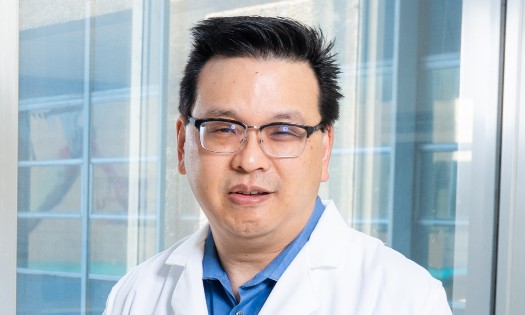The medical community is increasing attention to the effect that geography, family income and other socioeconomic factors have on health outcomes. Fully understanding these factors and their impact is necessary to address health disparities to provide patients the care and opportunities they deserve.
Investigators at Children’s Medical Center Dallas, part of Children’s Health℠, and UT Southwestern contributed to this growing body of knowledge with a recent study linking socioeconomic factors with clinical outcomes for children with solid tumors. The study analyzed data from the Texas Cancer Registry, which included roughly 4,000 pediatric patients.
In this Q&A, Dai Chung, M.D, Chief Medical Executive at Children’s Health and a Professor of Surgery at UTSW, discusses what they learned and what these findings mean for cancer care in Texas and beyond.
How do socioeconomic factors affect outcomes for children with solid tumors?
Our study showed that race and location can make a big difference. Specifically, we found a higher risk of death five years after diagnosis for:
Children who live in a disadvantaged neighborhood and/or along the US-Mexico border.
Children who are Black or belong to a race that makes up less than 1% of the patient population (called “rare minority race” in this study).
Surprisingly, we found that race sometimes supersedes location. Children of a rare minority race who live in more socioeconomically advantaged areas had a higher risk of death than other children living in those same areas. This suggests there is more at play than family income and other practical aspects of access.
How were socioeconomic factors measured in this study?
We used a comprehensive measure called the Area Deprivation Index (ADI), which was developed by the Center for Health Disparities Research at the University of Wisconsin School of Medicine and Public Health. In the past, studies might have considered gender, zip code, or other singular factors but ADI is emerging as a new standard.
It combines data for 17 different socioeconomic indicators, ranging from education to housing conditions. And it measures neighborhoods on a scale of 1 to 5: The higher the number, the higher the deprivation within that area.
According to the study, the risk of death at five years for children with solid tumors rises 4% for every step up the ADI scale. Specifically, the risk of death was 12% for children who live in the least deprived neighborhoods (first ADI quintile) and 28% for those in the most deprived (fifth quintile).
What should providers who care for children with solid tumors do with these findings?
Start by understanding the current data. The medical community is paying more attention to social determinants of health than we used to. But we can go much further in appreciating how substantial they are.
Secondly, we should go above and beyond to mobilize resources for children with solid tumors who fall into the risk groups we identified. Our study doesn’t delineate exactly what causes them to have poorer outcomes – but we can assume it includes barriers like time of diagnosis, transportation, lodging and adherence to scheduled appointments. We should anticipate these barriers and provide support earlier and more proactively.
What specific forms of support and outreach might help?
One example would be connecting high-risk patients with a clinical care coordinator immediately. Typically, this might take weeks before that happens. But institutions could have protocols to expedite that process so a family is assigned a clinical coordinator right away to aide them with appointments and help solve transportation and other challenges.
We can also help normalize the act of going to the doctor by educating high-risk patient groups about habits like vaccines and wellness visits. This may help with early detection of solid tumors. It also helps build familiarity with their local health systems so that, if they receive a major diagnosis, they’re more comfortable seeking the care they need.
What other research do you have planned in these areas?
The investigators from this study have also conducted a similar project evaluating how socioeconomic factors affect outcomes for pediatric trauma patients. Children’s Health is a Level I Trauma Center, and our experience indicates that factors such as location of residence are meaningful in this area as well. So we performed a similar analysis, comparing patient outcomes with the ADI of their home area.
In terms of pediatric solid tumors, my lab will continue the work we’ve done for the last 20-plus years investigating new protocols and therapies for neuroblastoma among other solid tumors. We have more than 10 trials currently.
Neuroblastoma is both the most common non-cranial solid tumor and one of the most difficult to treat. But we continue to advance the medical knowledge and discover more effective treatment regimens. Children with these tumors deserve all the tools and hope we can possibly give them.


